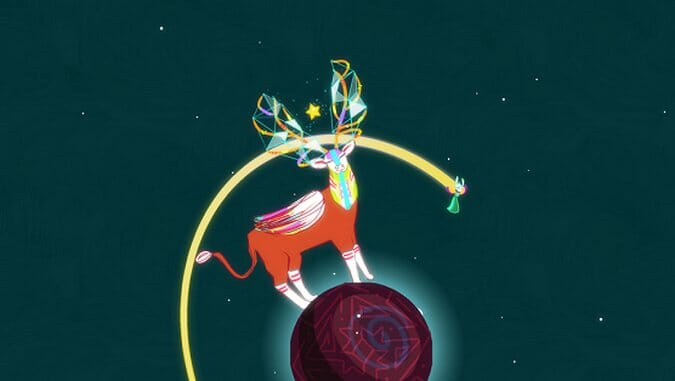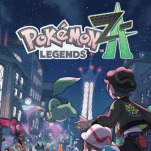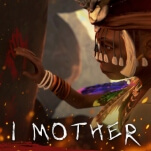Gravity Ghost: Stars and Science Forever

Erin Robinson’s new game Gravity Ghost dances on the fine edge of a line between two supposedly opposed ideologies. Or, maybe it orbits that edge. Spinning about its thematic core like its titular ghost flowing between the planetary bodies, Gravity Ghost brings the player to both an island off the shores of Michigan and the stars above it, drifting between a relaxing exercise in orbital physics and a sharp sentimental jab to the gut performed mostly through backstory. Though faith in its ultimate story about love and family may demand a willingness to accept the game’s sentiments at face value (cynics need not apply), Gravity Ghost nevertheless pulls apart the typical challenge-reward cycle for a physics-based puzzle game, flinging itself mightily toward finding that space between science and love.
Gravity Ghost introduces itself with some dreamy surreal circumstances and some simple, relaxing puzzles. Learning to guide Iona through the planets quickly becomes an exercise in light satellite operation as numerous planetoids shift in size and elemental type, shaping both the player’s velocity and direction and the effects when they collide with different surfaces. The result is an exercise in give and take, with players surrendering typical rewards usually demanded by puzzlers and instead being invited to sometimes just have faith and let go.
The lack of failure is not without a lack of challenge—or incentive. Your goal here is to reunite with your foxy friend Voy, and to do so, you’ll need to collect stars to travel to new constellations he might have bounced off to. Voy isn’t the only animal spirit in need of a rescue, however. Bears, ferrets, mice and other ghosts need to be reunited with their skeletons, and through these challenges, you’re offered glimpses into Iona’s memories of who she was when she was human.
Those circumstances become the uniting aesthetic that bring Gravity Ghost’s play in line with its thinking. In life, Iona was a child far out of balance, spinning between happy moments with unconventional friends and trouble with her own family. It’s a series of events that create an edge between harsh reality and our own wants and needs. Wise old Eddie understands the balance between the two, framing it coyly as “Sacred Geometry,” a visual that repeats itself in the shapes Iona discovers in space that grant her more powers.
In space, these two concepts live harmoniously. Robinson’s orbital design isn’t quite accurate to what NASA’s working with, but she and her programming team have built a system that turns the “slingshot-around-Jupiter” scenario from most science fiction scripts into a casual, colorful maneuver that inspires fun and experimentation instead of a strict fealty to reality. Most of the aesthetics in the core gameplay live as reinterpretations of gravitational physics, ranging from fiery planets whose hot air pushes Iona away during a low orbit spin, or gas giants that she bounces off repeatedly. Working those ideas together, space becomes a place where Iona gets to learn what she never was able to on Earth, both as she learns to help animals, and as she struggles to repair a mysterious black hole with the aid of seven animal guardians.
As Earth and Space begin to come together though, Gravity Ghost’s biggest challenge becomes continuing to lift its infinite contradiction and ensure the player stays invested in both the character drama and the orbital gameplay. Iona’s past being presented through cutscenes may be a large stumbling block. They’re meant to reward linking animals’ spirits back to their bones, but these are not particularly difficult challenges compared to some of the more mind-teasingly difficult ones. Delivering drama through backstory also suffers from the challenge as it does in any other medium—-when forward narrative motion lays explicitly in the past, the narrative becomes an exercise in reflection, not propulsion driven by conflict, and the player can’t reflect on what they didn’t already know.
-

-

-

-

-

-

-

-

-

-

-

-

-

-

-

-

-

-

-

-

-

-

-

-

-

-

-

-

-

-

-

-

-

-

-

-

-

-

-

-









































